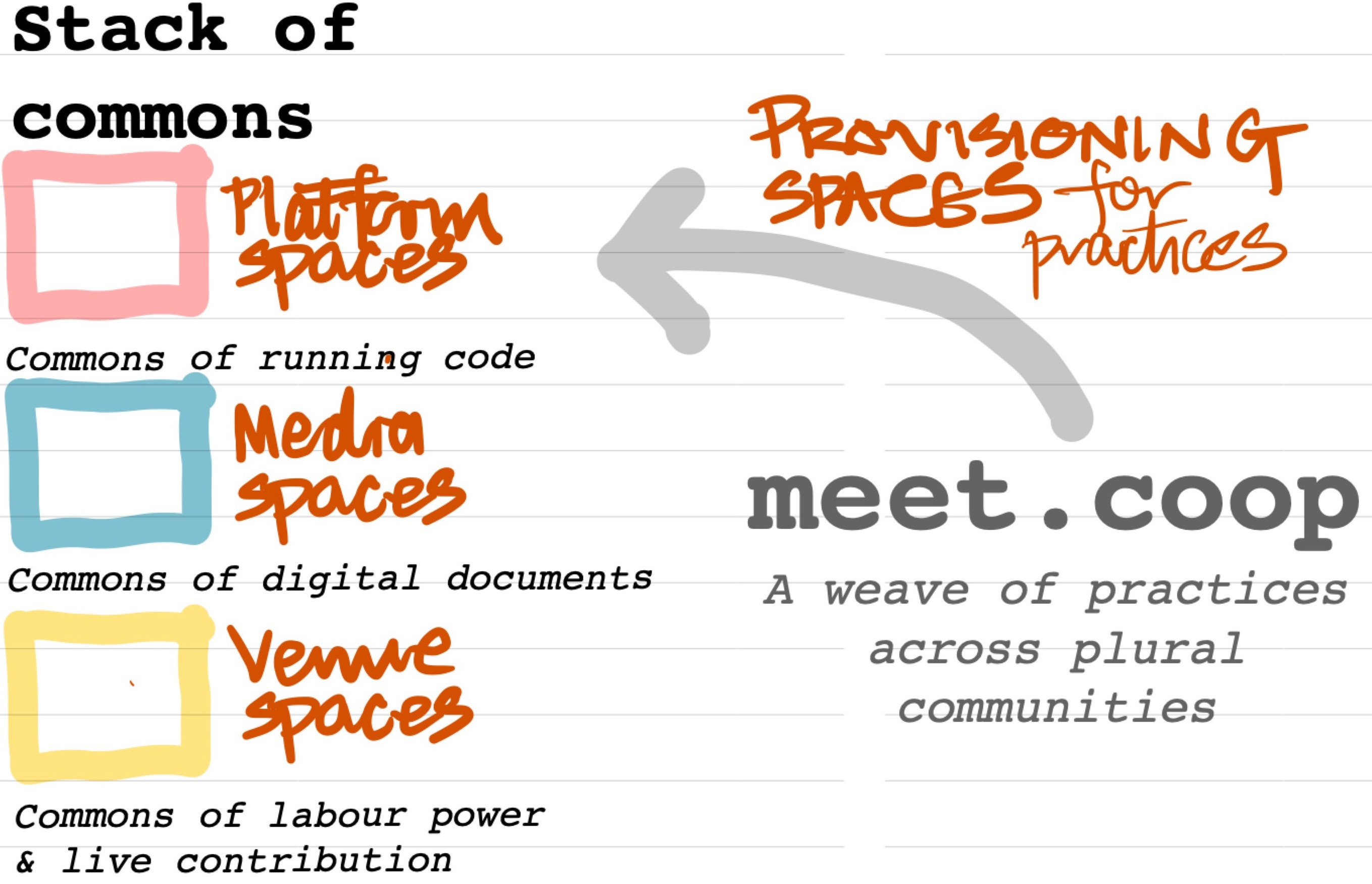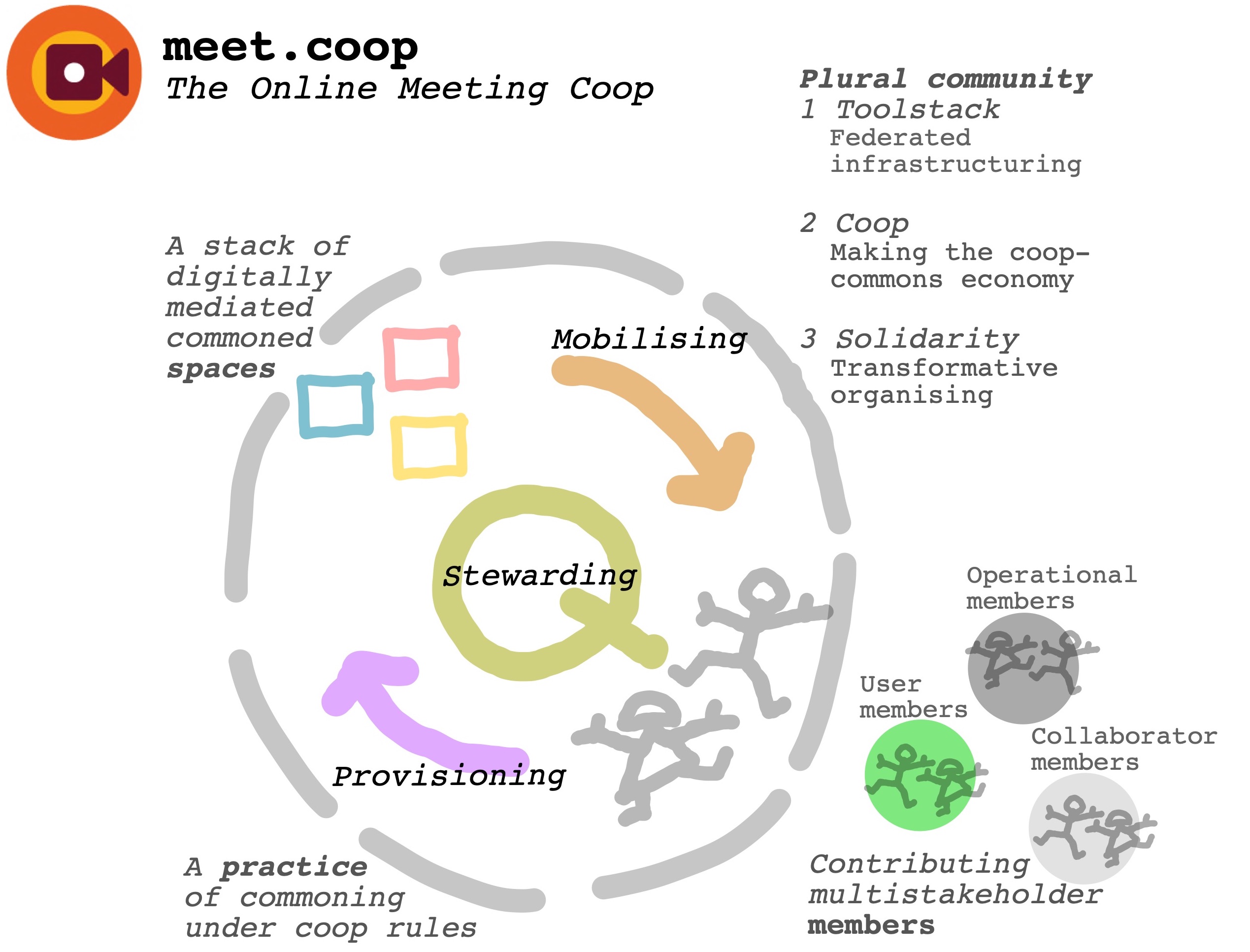Here we frame the notion of 'a stack'. We deploy this quite fundamentally. Its a metaphor derived from the software world but here it's not basically about software: it's about 'layers' or interweaving fields of social practice.
It's about institutional and cultural architecture. It;s about power(s), and relationships between powers.
# The originating tech meanings of 'stack' Way back, a stack was a data structure. Items are stored at the head of a stack, and are removed at the foot (first-in, first-out) or head (first-in, last-out). These protocols have different consequences and uses. Items in the middle of a stack can be located and retrieved for use by 'stack pointers'. This is basic computational stuff.
'Stack' took on a whole new meaning with networking of computers and data stores. To communicate between devices a variety of kinds of protocol and coding came to be adopted. The physical wiring and addressing has one kind of protocol. The packaging of data for transmission across a network has another kind of protocol. And so on. In the world of the internet then, each kind of protocol constitutes one layer in a stack of protocols, all of which need to be deployed in building and operating any actual comuter-data network. The ISO protocol framework is one such (European in origin), TCP-IP is another (USA origins).
Sysadmins (or just 'admins') are folks who operate and maintain networked computer-data resources, as hosts for services that are used by 'users'. Every admin-server combination has 'a stack' that the admin maintains: the various elements of software, of various kinds, that are needed both to manage the services operationally 24/7, to provide users with the functions ('tools' or 'apps') that they have available to them on their devices across the network, and to support the work of maintenance.
In the world of software development there typically is a division of labour between programmers who work on 'the machinery' of the processing and programmers who work on the interface and how the app will look-and-feel in use. But often there are job ads for 'full stack developers' who can work across the whole range. Here we use that real-world practical distinction between 'how it works' and 'how it's used', and we propose 'a real full stack' which goes way beyond software code. A real full stack
# Beyond tech to 'a stack of commons' In 2020 - in response to the Covid-19 pandemic - a trans-regional coop (Spain, England, Canada, Germany) was formed to jump into the suddenly expanded field of online meeting services: meet.coop, 'The online meeting coop'. The aim was to use a democratic form of organisation and governance: the multistakeholder coop form, embracing both users and admins. It was also to put digital resources 'in the commons': where fair and durable and socially valuable curating, mobilising and stewarding of the digital means was under the stewardship of the entire collective of commoners. In addition to cooperative *provision*, beneficial (and durable) social *use* was a central concern.
This hasn't proved easy to do (the story remains to be documented); but [meet.coop](https://meet.coop) will still provide you, as a paying member, with a digital meeting service delivered through FLOSS software called BigBlueButton. BBB was developed for use in distance learning classrooms and because of this it has a number of features that differ from the dominant meeting platforms like Zoom or Teams, and from other FLOSS platforms like Jitsi.
Because of this 'user facing' ambition to cultivate beneficial social use (and *capability* to use the tech meaningfully) as well as a working apparatus of tech, one notion that emerged was that meet.coop was in fact 'a stack of digitally mediated commons'.
We saw three layers, each of which is a distinct kind of practice, possibly implicating a distinct set of actors and certainly calling for a distinct set of skills: - Platform space - A **commons of running code**, stretching all the way from the FLOSS repo of source code, thro the admins' stack(s) behind the scenes in the coop, and into the browser running on the user's device, via the international and local networks. This is a pretty complex field to take responsibility for and, in itself, a real tech challenge. - Media space - A **commons of documentary media** (mostly text, some video) required to operate and deploy the tech, and to run and develop the coop and its multistakeholder community of ops and user members. It included a handbook/repo for reference, threaded text conversations in a forum for ongoing conversations and deliberations (also spanning time zones) and live text exchanges for real-time collaboration. - Venue space - A **commons of labour power** or capability, in which all the visions, insights and capabilities across the membership - and friends who are not members - can be brought into a live, person-to-person relationship. There's more than one venue space: some are 'back end' (like the sociocratic Circles of operational members) and some are 'front end', notably the 'commons.hour' series of webinars. Venue spaces are needed for exploration, for relationship-making and for key decision making in the coop.
# The bottom line - Why 'stack'? We offer this meet.coop early version here as an indication of the richness and diversity that needs to be mobilised and visioned, as we think about (counter)infrastructure(ing) in the commons. We regard this 'stack' as a helpful practical tool for doing the work of weaving and mobilising. It has a politics: each kind of space may have a distinct aesthetic and a distinct core membership.
Here's the picture of the stack of commons in meet.coop:

The stack of digitally mediated spaces in meet.coop
And here's how those commoned means could be seen within the entire commons that is meet.coop:

A stack of spaces within the processes of a commons: meeet.coop
The basic schema is that of a commons, with its three constitutive process of provisioning/curating, mobilising/enjoying and stewarding/defending. The stuff that's 'in the commons' is the stack of digitally mediated spaces. The community of members in this particular commons has three basic elements: toolstack, coop and solidarity. See Design justice
The work of the Democratic Tech Fund and its Federation is more complex than meet.coop's work; meet.coop was an infrastructure around just one app! The federation's work is manifestly 'political' rather than apparently 'tech', and the range of actors is greater. But 'a stack' seems a good way to profile the richness and scope of the textures and dynamics that need to be addressed, and to frame the small-p political challenge of how to help many different kinds of actors into a common 'dance'. Thus here we have a more complex stack. A real full stack
See also: The federation - Contributions in a commons of movement capability The tech layers The social layers The planet layer
DOT strict digraph rankdir=LR node [style=filled fillcolor=lightyellow penwidth=3 color=black fontname="Helvetica"] HERE NODE node [style=filled fillcolor=lightblue] WHERE /^Next/ LINKS HERE -> NODE node [style=filled fillcolor=white] HERE NODE WHERE /^Next/ LINKS HERE -> NODE node [style=filled fillcolor=white penwidth=3 color=black] LINKS HERE -> NODE node [style=filled fillcolor=white penwidth=1 color=black] HERE NODE LINKS HERE -> NODE node [style="filled,rounded,dotted" fillcolor=white] edge [style=dotted] HERE NODE BACKLINKS NODE -> HERE STATIC strict digraph {rankdir=LR node [style=filled fillcolor=lightyellow penwidth=3 color=black fontname="Helvetica"] "Federating digital" node [style=filled fillcolor=lightblue] "Federating digital" -> "A federation" node [style=filled fillcolor=white] "A federation" "A federation" -> "Capability in the collective" node [style=filled fillcolor=white penwidth=3 color=black] "Federating digital" -> "Digital coup" "Federating digital" -> "(Contra)infrastructuring" "Federating digital" -> "A real full stack" "Federating digital" -> "A federation" "Federating digital" -> "Europe" "Federating digital" -> "Cities" "Federating digital" -> "South from the start" "Federating digital" -> "The fund - Contributions in a money commons" "Federating digital" -> "The federation - Contributions in a commons of movement capability" "Federating digital" -> "Platform-tech shopping list" "Federating digital" -> "Toolstack shopping list" "Federating digital" -> "Mission for federating digital" "Federating digital" -> "A federation" node [style=filled fillcolor=white penwidth=1 color=black] node [style=filled fillcolor=white penwidth=1 color=black] "(Contra)infrastructuring" "(Contra)infrastructuring" -> "Digital coup" "(Contra)infrastructuring" -> "Infrastructuring aka design" "(Contra)infrastructuring" -> "Stacks" "(Contra)infrastructuring" -> "A real full stack" "(Contra)infrastructuring" -> "Platform-tech shopping list" "(Contra)infrastructuring" -> "Toolstack shopping list" node [style=filled fillcolor=white penwidth=1 color=black] "A real full stack" "A real full stack" -> "The tech layers" "A real full stack" -> "The social layers" "A real full stack" -> "The planet layer" "A real full stack" -> "A federation" node [style=filled fillcolor=white penwidth=1 color=black] "A federation" "A federation" -> "Capability in the collective" "A federation" -> "The federation - Contributions in a commons of movement capability" "A federation" -> "The fund - Contributions in a money commons" "A federation" -> "A real full stack" "A federation" -> "Digital coup" "A federation" -> "Capability in the collective" "A federation" -> "Europe" "A federation" -> "South from the start" "A federation" -> "Stacks" node [style=filled fillcolor=white penwidth=1 color=black] "Europe" "Europe" -> "Bioregions" "Europe" -> "Cities" "Europe" -> "South from the start" node [style=filled fillcolor=white penwidth=1 color=black] "Cities" "Cities" -> "Bioregions" "Cities" -> "Transregion infrastructures" node [style=filled fillcolor=white penwidth=1 color=black] "South from the start" node [style=filled fillcolor=white penwidth=1 color=black] "The fund - Contributions in a money commons" "The fund - Contributions in a money commons" -> "Contribution economy" node [style=filled fillcolor=white penwidth=1 color=black] "The federation - Contributions in a commons of movement capability" "The federation - Contributions in a commons of movement capability" -> "Contribution economy" node [style=filled fillcolor=white penwidth=1 color=black] "Platform-tech shopping list" "Platform-tech shopping list" -> "Toolstack shopping list" "Platform-tech shopping list" -> "The tech layers" "Platform-tech shopping list" -> "The social layers" "Platform-tech shopping list" -> "The planet layer" node [style=filled fillcolor=white penwidth=1 color=black] "Toolstack shopping list" "Toolstack shopping list" -> "Platform-tech shopping list" "Toolstack shopping list" -> "The tech layers" "Toolstack shopping list" -> "The social layers" "Toolstack shopping list" -> "The planet layer" node [style=filled fillcolor=white penwidth=1 color=black] "Mission for federating digital" node [style=filled fillcolor=white penwidth=1 color=black] "A federation" "A federation" -> "Capability in the collective" "A federation" -> "The federation - Contributions in a commons of movement capability" "A federation" -> "The fund - Contributions in a money commons" "A federation" -> "A real full stack" "A federation" -> "Digital coup" "A federation" -> "Capability in the collective" "A federation" -> "Europe" "A federation" -> "South from the start" "A federation" -> "Stacks" node [style="filled,rounded,dotted" fillcolor=white] edge [style=dotted] "Federating digital" "Roughing" -> "Federating digital"}